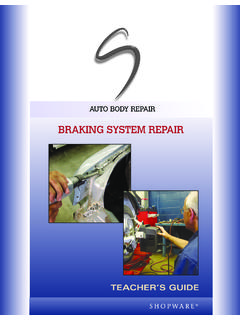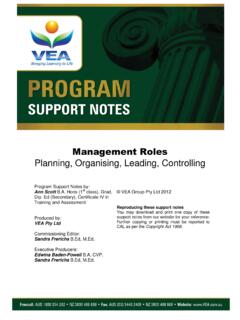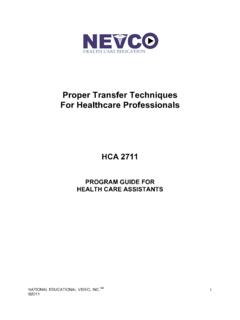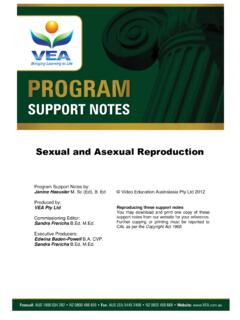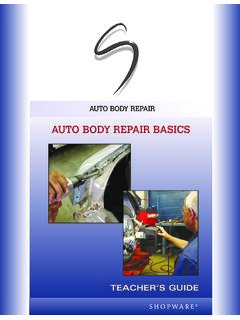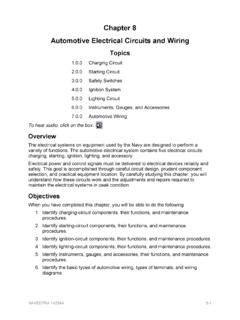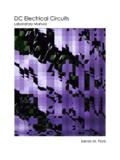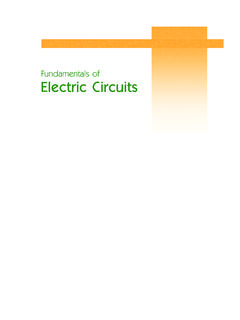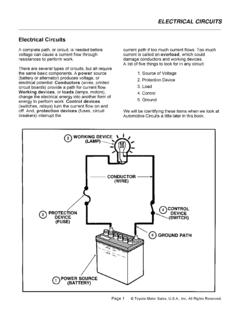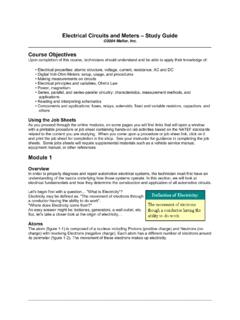Transcription of Electrical Circuits - Infobase
1 ADDITIONAL RESOURCES We use Electrical Circuits every day. In the home, the car, at work and school they are a vital part of our lives. This program covers the basics of Electrical Circuits in detail. It looks at various components of a circuit ; voltage, current, resistance and Ohm s Law; series and parallel Circuits ; and demonstrates a range of calculations for voltage, current, resistance, power and the use of Kirchhoff s Law. It also covers how to use a multimeter; resistors and resistance colour coding. Learners are provided with clear verbal and visual explanations of the movement of current through a circuit , how it flows and how Electrical energy is used, and easy-to-follow examples of how Ohm s and Kirchhoff s Laws are applied.
2 The content is ideal for middle level science students, and essential viewing for entry level vocational learners in Electrical and allied trades. Duration of resource: 23 Minutes Year of Production: 2013 Stock code: VEA12041 Resource written by: Derek Bailey B of Ed (VET), Cert IV TAE10, NSW Licensed Electrician, Qualified Supervisor and Contractor, Public RTO Teacher Electrical Circuits 2 VEA Group Pty Ltd 2013 Reproducing these support notes You may download and print one copy of these support notes from our website or ClickView for your reference.
3 Further copying or printing must be reported to CAL as per the Copyright Act 1968. For Teachers Introduction The purpose of the Electrical Circuits training video is to identify the key basic parts of an electric circuit and the different results observed, depending on the components, materials and configuration used for a particular circuit . The principles and ideas demonstrated correspond with the prerequisite knowledge for a range of Australian National Training Package Units of Competency. They are suitable for various electro technology qualification pathways and are applicable to senior secondary physics.
4 By the use of guided demonstration, wiring diagrams and animated schematics (electric Circuits drawn to applicable standards and codes), the viewer is shown: an explanation of what makes an Electrical circuit ; introduced to the applicable terminology for the basic elements and components used; and the observable and repeatable phenomena, such as voltage, current, resistance and power. Timeline 00:00:00 Introduction to Circuits 00:04:17 Series Circuits 00:07:58 Parallel Circuits 00:09:57 Calculations 00:14:12 Measurements 00:17:50 Resistors 00:21:57 Credits 00:22:31 End program Related Titles One Flash and You're Ash!
5 Working Safely With Electricity Recommended Resources Electrical Circuits 3 VEA Group Pty Ltd 2013 Reproducing these support notes You may download and print one copy of these support notes from our website or ClickView for your reference. Further copying or printing must be reported to CAL as per the Copyright Act 1968. Student Worksheet Initiate Prior Learning 1. List the toys, equipment, computer, entertainment devices that use electricity from mains power (including charging devices) that you use on a daily basis.
6 _____ _____ _____ _____ _____ _____ 2. If there was no power available for you to use the items listed in question 1, what one item would affect you the most and why? _____ _____ _____ 3. Apart from plugging the item of question 2 into the normal Electrical distributed mains power system, what alternative sources of electricity could be used to provide the required Electrical power? _____ _____ _____ 4. From the alternative sources that you have described which one do you think would be the easiest to construct and maintain? _____ 5.
7 What do you do to stop wasting electricity in your everyday life? _____ _____ _____ Electrical Circuits 4 VEA Group Pty Ltd 2013 Reproducing these support notes You may download and print one copy of these support notes from our website or ClickView for your reference. Further copying or printing must be reported to CAL as per the Copyright Act 1968. Active Viewing Guide Introduction to Circuits 1. Name the basic parts of an Electrical circuit ? _____ _____ _____ 2. Describe in your own words the difference between electromotive force (EMF) and potential difference (PD) in an Electrical circuit ?
8 _____ _____ _____ _____ 3. What are the accepted practices to show the flow of electrons and current in an energised complete Electrical circuit ? Use a diagram to illustrate your response. Electrical Circuits 5 VEA Group Pty Ltd 2013 Reproducing these support notes You may download and print one copy of these support notes from our website or ClickView for your reference. Further copying or printing must be reported to CAL as per the Copyright Act 1968. 4. In an Electrical circuit that is complete, the opposition to electron flow is known as?
9 _____ 5. Name the result of the combination of opposition to electron flow, and potential differences supplied by the emf of the circuit to a complete Electrical circuit . _____ 6. In a direct current circuit , state the relationship between voltage (potential difference), current and resistance using their associated symbols and units as described by Ohm s law. _____ _____ _____ _____ 7. Power used by an Electrical circuit is the product of what two terms of Ohm s law? _____ _____ 8. Can the power in a series direct current circuit be found if only the resistance and voltage are known?
10 Explain your answer. _____ _____ _____ Electrical Circuits 6 VEA Group Pty Ltd 2013 Reproducing these support notes You may download and print one copy of these support notes from our website or ClickView for your reference. Further copying or printing must be reported to CAL as per the Copyright Act 1968. 9. Using three separate diagrams to describe the terms open, closed and short Electrical Circuits . Series Circuits 10. Draw a circuit having one EMF source, a closed switch and four incandescent lamps in series.

